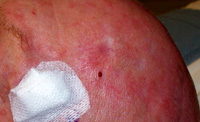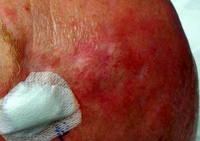Scars are noticeable marks left on the surface of the skin that can lead to skin textural changes. Scars are permanent! There are number of reasons why a person might have scars. These could be let over marks from acne, trauma, burns and sometimes from body piercing and tattoos. Sometimes scars can be an interesting story, even a badge of honor, but other times scars are unpleasant, even disfiguring, and they can make one feel self-conscious or embarrassed. No matter what type of scar is present or where it is located, there are many treatment options that can significantly reduce its appearance.
If you have a scar you would like treated or made less visible, schedule a scar reduction consultation with Dr Khan today.
What Are Scars?
Scars are an abnormal healing response of the skin to injury. There are three main types of scars: atrophic scars, hypertrophic scars, and keloids. While atrophic scars are skin depressions, hypertrophic and keloid scars are elevated, red and can be quite disfiguring.
 |
 |
|
| BEFORE | AFTER |
Treating Atrophic Scars
Atrophic scars are very commonly seen as a result of acne or skin surgeries. This type of scar can benefit from a number of noninvasive treatments. For acne scarring and other widespread scarring, Fraxel re:store laser treatment is one of the best treatments available. Scars with uneven surfaces, such as bumps or ridges, can be smoothed using a CO2 lasers. These lasers vaporize the elevations of the scar and flatten them to produce a smoother surface.
The pulsed dye laser can minimize the red color and thickness of some scars, while various Q-switched lasers have been demonstrated to lighten the dark color of scars. Some scars require treatment by a combination of lasers.
Dermal fillers can be used to elevate indented, soft scars. Improvement is immediate, but the tradeoff is that it is not permanent. Injections typically need to be repeated every three to six months.
Treating Hypertrophic Scars and Keloids
Lasers can also be used to reduce the appearance of hypertrophic scars. Pulsed dye lasers have been the standard treatment for hypertrophic scars and keloids. They flatten the scar, reduce its red appearance, and improve the itching and burning sensations commonly associated with them. Q-switched lasers can also help reduce the appearance of the pigmentation within these scars.
While hypertrophic and keloid scars can be treated at any time, the best results occur when they are treated as early as possible. If a family history of hypertrophic or keloid scarring is evident, it is best to have preventative treatment to reduce the appearance of your scars.
If you have a scar or a propensity to scar about which you are concerned, Dr. Khan will discuss the best possible treatment plan to diminish the scar’s appearance. HYPERLINK "http://www.skinlaser.com/contact/schedule-an-appointment/" \o "Schedule An Appointment" Schedule a scar treatment consultation today.


